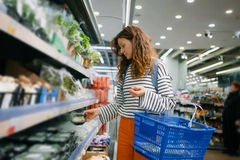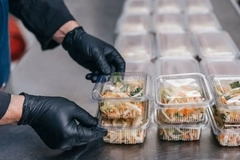Aseptics take a whole new shape

The first to commercialize combishape aseptic technology, CAPSA of Spain claims it has ‘The most advanced packaging for the most innovative product. ’ Aseptic filling of paper/foil containers is common enough. And high-speed paper cup making is equally proven.
The first to commercialize combishape aseptic technology, CAPSA of Spain claims it has ‘The most advanced packaging for the most innovative product.’ Aseptic filling of paper/foil containers is common enough. And high-speed paper cup making is equally proven. But rarely have the two been combined as effectively as they are in the combishape packaging system behind the 1-L containers of NaturLinea premium milk from CAPSA, a large cooperative in Oviedo, Spain. Supplied by Sig Combibloc, the combishape system’s uniqueness is in its ability to produce aseptic beverage cartons in something other than the basic rectangular shape that’s been around for so long now. Sig Combibloc claims it has defined “more than 40 basic shapes, each with its own characteristics.” CAPSA, which is the first to commercialize the new technology, chose an oval shape for its product, but the shape can be developed pretty much according to the customer’s needs. CAPSA began shipping product in March of this year. It’s clear that being able to offer a novel package shape was a key driver in the firm’s decision to play the pioneer. “By letting us further enhance product differentiation through carton shape, combishape represents a revolution in the packaging sector,” says CAPSA president Pedro Astals. “In the future, brand names will only survive if they can combine optimal product performance with an unmistakable market identity.” Selecting a unique shape for NaturLinea was especially important because the product itself is an innovation. It contains a natural ingredient called Tonalin®, derived from safflower, that promotes the breakdown of fat tissue in the body and transforms existing fats into energy. CAPSA is the only dairy in Spain that offers such a product, so the unique combishape format underscores the value-added product’s uniqueness. As the firm’s promotional tagline puts it: “The most advanced packaging for the most innovative product.” Perhaps the single biggest difference between combishape and aseptically filled paper/foil cartons long made available by Sig Combibloc and others is that previous versions are either made from a single roll of material or from blanks that are erected and filled. The combishape, on the other hand, is assembled from three separate roll-fed pieces: sleeve, base, and lid, all three of which are made of a paperboard/foil/PE construction. Also significantly different is the three-part closing fitment: adapter, pull-tab, and screw cap. For more information, visit www.capsa.es or contact seleccion@capsa.es.











